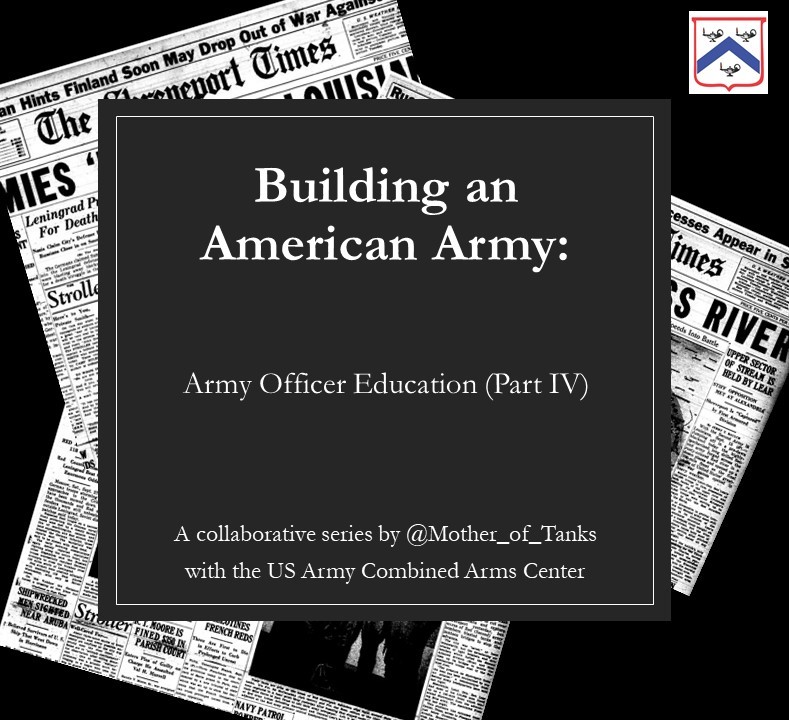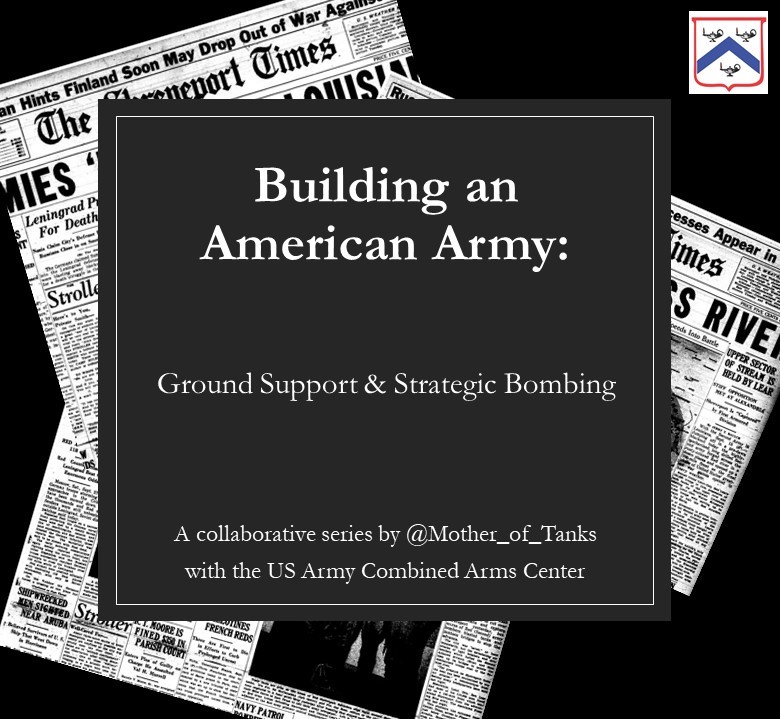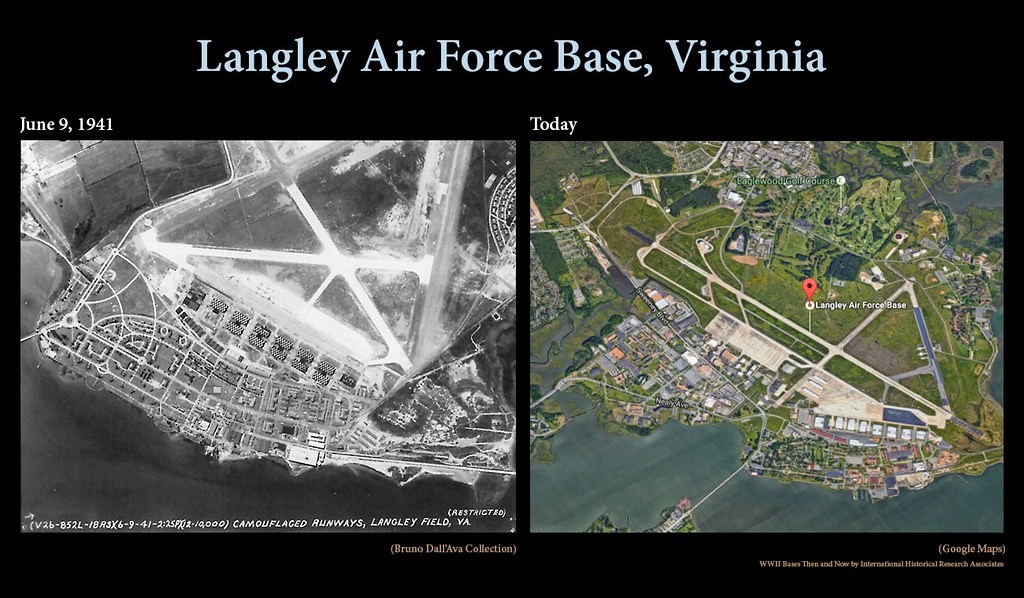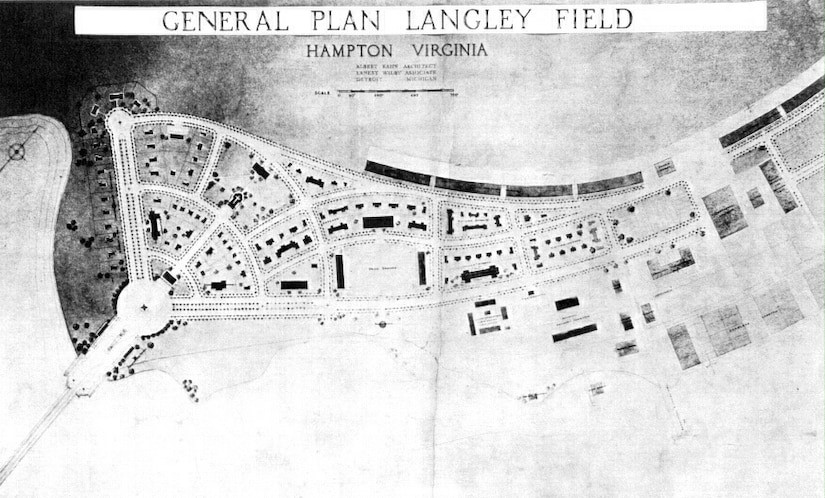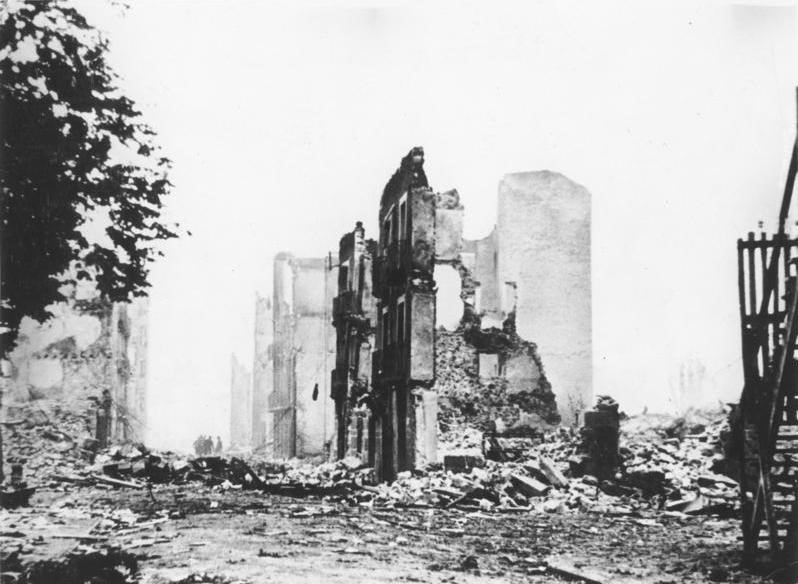
This week we would like to talk a bit about Lesley McNair, who served as the Army Ground Forces commander from 1942, but before that he was the Army GHQ Chief of Staff and helped shape the @USArmy in ways that we still see today. 

There is an excellent book about McNair by @MCalhoun47 and if this week’s threads inspire anyone to learn more about this important @USArmy figure, check it out! @us_sams 

Incidentally, today would have been his birthday. McNair was born on 25 May in 1883.
McNair initially was on a waiting list for the @NavalAcademy after graduating high school in 1897, but in 1900 he was still waiting. So, in July of that year, he applied to @WestPoint_USMA and began school there a month later. @UsmapsC 





He graduated in 1904, and while not entirely relevant to the story we’re telling here, the yearbook “Howitzer” had the following for McNair: 

He apparently earned the nickname “Whitey” because his hair was so blond, and “Pedestrian Whitey” refers to an incident in which he missed a bus and had to walk 11 miles to get back to school. Someone wrote a poem about it. Kids are mean 😂 

Anyway, so he commissioned in 1904 as a Second Lieutenant and he Branched Artillery, but later requested to work with Ordnance. @ChiefofOrdnance @OrdnanceCSM @USAODCorps 



With Ordnance he worked to improve the guns being used by Artillery to support ground forces and also engaged in professional development and self-directed study before later returning to Artillery. 

A Lieutenant and fellow @WestPoint_USMA grad working with McNair called him an “outstanding battery commander” who “set high standards, led by example, and possessed the ability to motivate his men to perform exceptionally well”. 

He was by-name-requested to bring his talents to the Field Artillery School @USAFAS where he was tasked with compiling data from tests and field exercises into firing tables to support the planning and control of indirect fire. 

At the same time, McNair spent more than half a year in France observing how the @armeedeterre taught, trained, and used the French artillery forces.
Before World War I, McNair devoted a considerable amount of his time developing and publishing procedures for that firing table data and experimenting with Artillery in order to have viable recommendations for manufacturing and procurement for WWI. 

During WWI, he served with @FightingFirst and was responsible for mobilization as well as individual soldier and unit training. On the ship to France, McNair would share quarters with George C. Marshall, solidifying their bond for the rest of their careers. 





In the span of just a couple of years, McNair would make (temporary) Lieutenant Colonel, (temp.) Colonel, (temp.) Brigadier General – youngest General Officer in the Army at age 35. 

With the reopening of @USACGSC at @FortLeavenworth, McNair was assigned to the CGSC faculty and his rank, which had been temporary for the war, dropped back to Major 😐 







As we’ve talked about over the last two weeks, CGSC was aiming for professional military education (PME) for field grade officers who would be involved in the planning and execution of operations at the division level and higher.
It’s hard not to see McNair as an overachiever 🙂 He didn’t just help design and implement the course curriculum at CGSC, which he then got credit for attending, but he was also one of the primary authors of the @USArmy’s revised Field Service Regulations in the early 1920s.
After his time on faculty at @USACGSC McNair got to go to Hawaii 🍍🌴🌺 and it was there that he started to get involved in Army discussions about coastal defense involving the Coastal Artillery and Army Air Service. 

This interest, coupled with his reputation for objective analysis and weapons experimentation, led to him being volunteered to investigate the strengths and weaknesses of Coastal Artillery and the Army Air Service. Particular emphasis was placed on the defense of Oahu. 



Around the same time, McNair was also made responsible for directing a review of the joint @USArmy @USNavy defense plan for protecting Hawaii from a possible attack by Japan (War Plan Orange). It was interesting, but we won’t dive into it much here. 

With the changes stemming from the National Defense Act of 1920, @ArmyROTC programs evolved. McNair would serve as a professor of military science and tactics for Purdue University. @LifeatPurdue 

After 4 years with Purdue’s ROTC program, McNair was promoted to Lieutenant Colonel and sent to the @ArmyWarCollege with its updated curriculum that now focused on matters of economy, industry, logistics, and mobilization, as well as Doctrine, tactics, and strategy. 



McNair and his classmates at the @ArmyWarCollege studied war plans and policies (foreign, defense) and provided recommendations for improving plans and regulations. 

After War College, he would serve as the Assistant Commandant of the Field Artillery School (@USAFAS) at @OfficialFtSill where he worked to change Doctrine to reflect tactics he had been supporting since his experience in WWI. 



In particular – massing artillery and centralizing control of artillery from a brigade fire direction center to provide faster direct support to given areas of a battlefield where that direct fire support is most needed. Fun fact: still relevant 🙂
These changes were facilitated by improved communications technology, changes to @USArmyDoctrine, and improved SOPs (standard operating procedures), leading to what would eventually become the standard for Field Artillery in World War II. 







A decent comparison of WWII artillery (US vs German) can be found here with a lot of other great pictures:
armyhistory.org/u-s-and-german…
armyhistory.org/u-s-and-german…
We'll continue with McNair on Saturday 🙂 If you're just tuning in or you've missed any of the previous threads, you can find them all saved on this account under ⚡️Moments or with this direct link twitter.com/i/events/13642…
• • •
Missing some Tweet in this thread? You can try to
force a refresh







